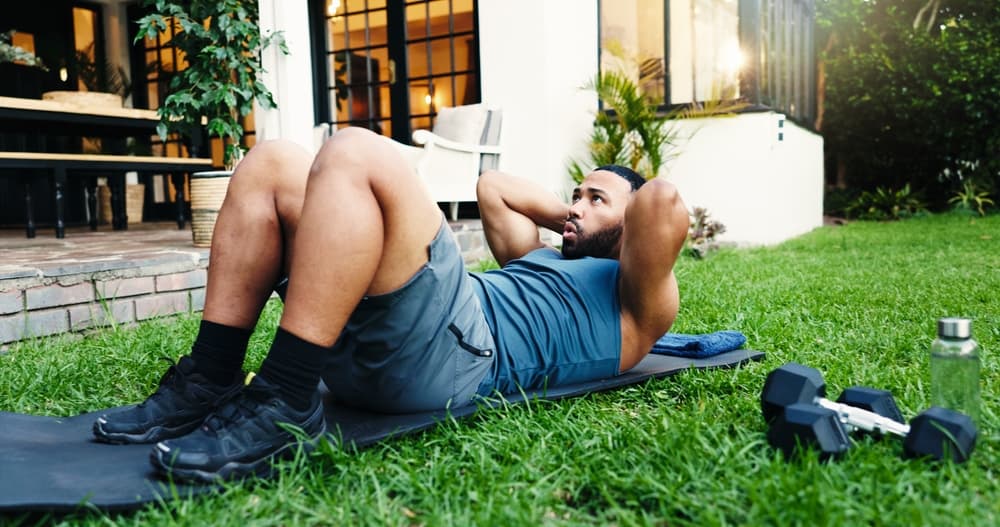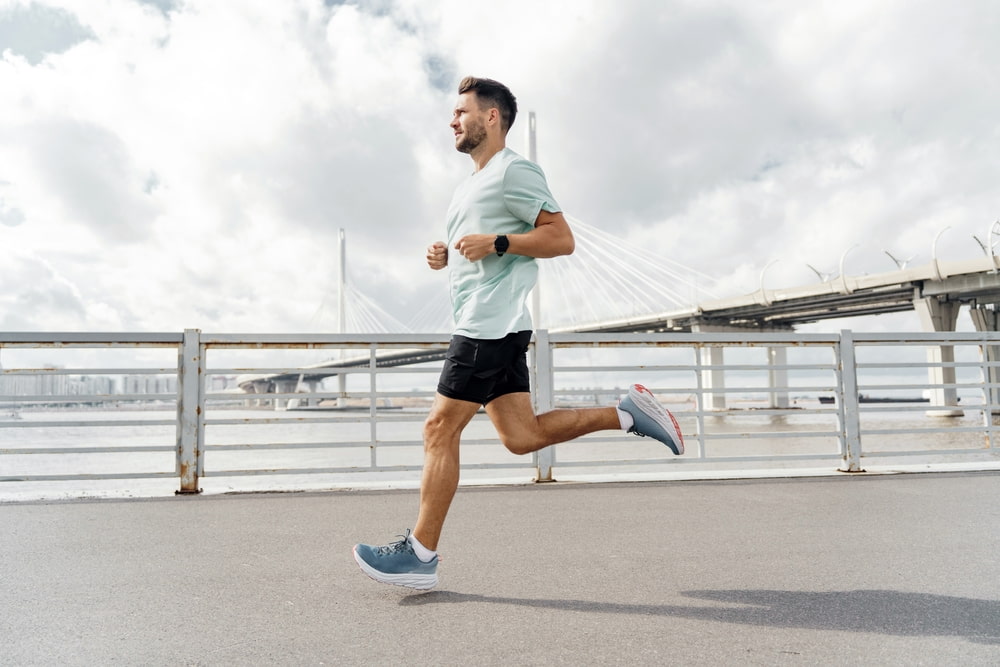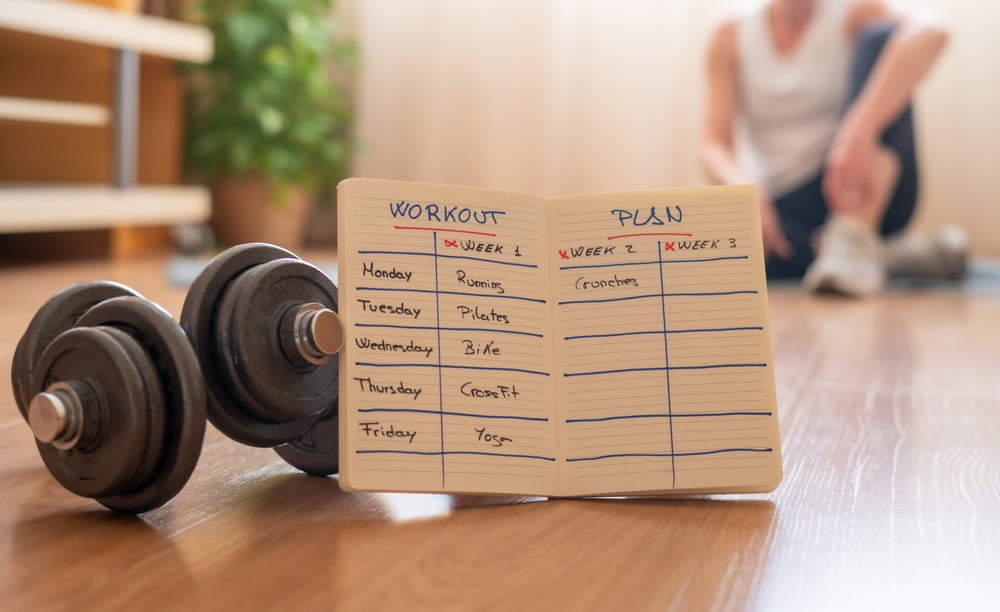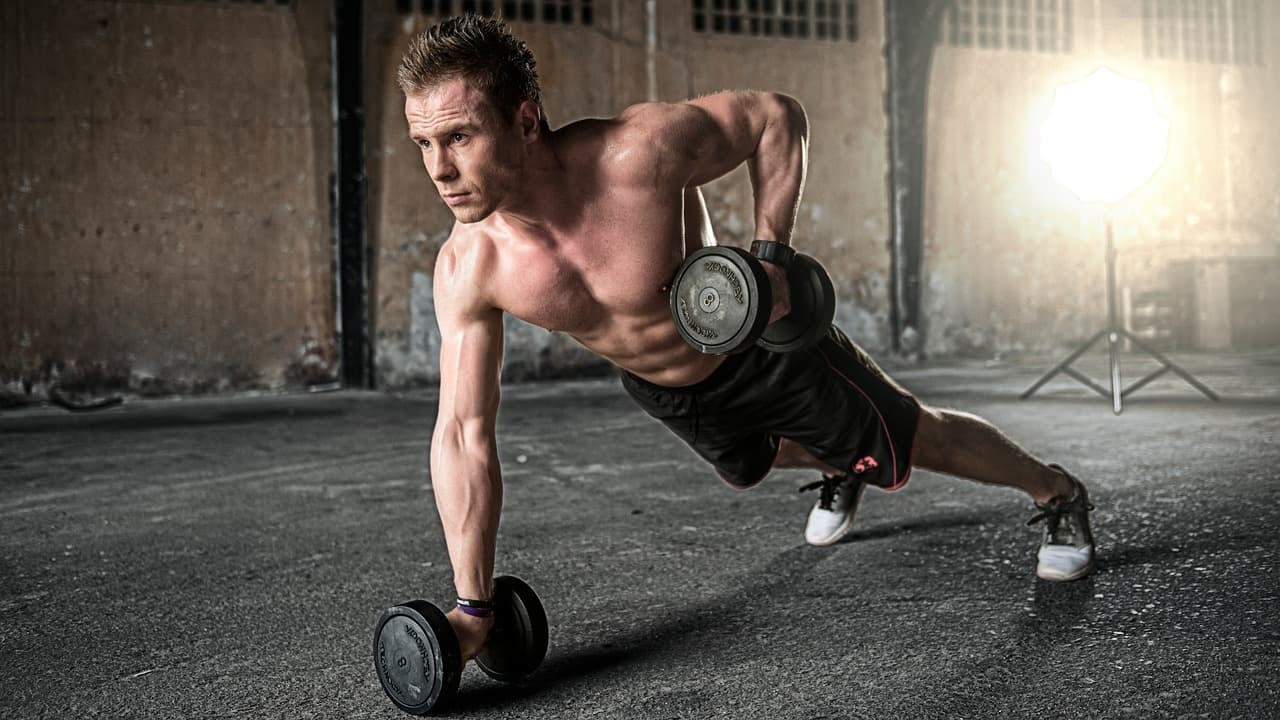7 Surprising Benefits of Good Low Impact Cardio You Didn’t Know About


Good low impact cardio is not just for busy people; it’s an innovative fitness method that delivers results without tiring the body. For those who want to lose weight, reduce joint stress, or gradually build an exercise habit, low impact cardio is the easiest, safest, and long-term solution. Exercises like walking, cycling, or elliptical are gentle on the body but also increase heart rate, burn calories, and help maintain energy throughout the day.
Especially for beginners or those recovering from injuries, it’s a type of “gentle but effective” workout that can make a big difference over time. If you’re looking for a sustainable, joint-friendly exercise that also supports weight loss, Good low impact cardio could be the best place to start.
What is Low Impact Cardio?
Low impact cardio is a type of cardiovascular exercise that gets your heart rate up and tests your lung capacity without putting too much strain on your joints.
The main characteristic of low-impact exercise is that at least one of your feet is always in contact with the ground or an apparatus.
Key features
Reduces stress on joints: Its main goal is to reduce the “push” or “shock” force that travels through the body. This makes it great for people with joint pain or injuries, as well as for those new to exercise.
Continuous connection: Unlike high-impact exercises (like running or jumping jacks), which involve both feet leaving the ground at the same time, low-impact movements maintain constant contact.
Intensity varies: Remember, “low-impact” does not mean “low intensity.” You can still achieve a very high heart rate and get an intense workout using low-impact methods.
Learn More: Low impact home workout
(adsbygoogle = window.adsbygoogle || []).push({});
The Science Behind Low Impact Cardio
The science of low impact cardio is based on biomechanics, joint physiology, and cardiovascular adaptation. Simply put, it allows you to reap the full benefits of aerobic exercise while reducing the risk of injury or damage to your bones and muscles.
Here are the key scientific principles explained:
Biomechanics: Reducing Ground Reaction Force
The main scientific difference between high-impact and low-impact exercise is ground reaction force (GRF). This is the force that the ground sends back to your body when your foot strikes the ground.
High-impact (running, jumping): When both of your feet leave the ground, and you land, your joints absorb a shock that can often be 2.5 to 3 times your body weight. This intense, repetitive force travels along the kinetic chain.
Low-impact (walking, cycling, elliptical): The key feature of low-impact is that at least one foot (or both feet on a machine) is in contact with the ground/surface at all times. This eliminates the hard-landing phase, resulting in much lower, smoother GRF. The force is distributed more gently, which protects sensitive structures.
Joint Physiology: Cartilage and Synovial Fluid
Low-impact exercise is beneficial for joint health because it encourages movement without damaging cartilage.
Cartilage Health: Cartilage is the connective tissue that cushions or protects your joints. It has no blood vessels, so it relies on movement to receive nutrients and remove waste.
Synovial Fluid Circulation: Low impact movements, such as the circular motion of cycling or the smooth motion of an elliptical, gently compress and stretch the joint. This movement helps circulate synovial fluid, which acts as a lubricant and nutrient delivery system for the joint.
Reduced risk of damage: Cartilage can handle slow, applied loads well, but impact loads above a certain threshold can severely disrupt its surface. Low impact cardio stays below that damage threshold, eliminating high impact, allowing for conditioning without any damage.
Cardiovascular adaptation: Oxygen delivery
The scientific goal of any cardiovascular exercise is to improve the function of your heart and lungs. Low impact cardio achieves this just as effectively as high-impact activity.
Oxygen demand: The cardiovascular system is only concerned with the oxygen demand of your active muscles, not how hard your feet hit the ground.
Endorphin release: Like all moderate to vigorous exercise, low impact cardio triggers the release of endorphins, which act as natural mood enhancers and pain relievers, aiding in mental health and pain management.
Learn More: Low impact workout routines for joint pain relief
7-Surprising Benefits of Good Low Impact Cardio
Supports Joint Health
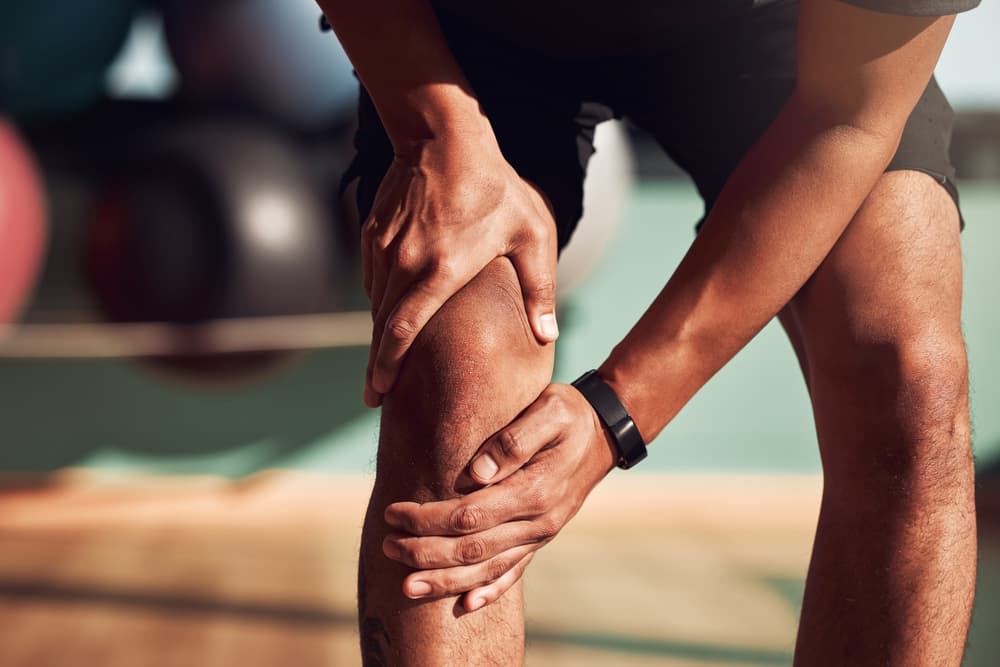

How does Low Impact Cardio support joint health?
Less stress, so less risk of injury
High-impact exercises like running, jumping jacks, and skipping put repeated stress on joints.
But Low Impact Cardio doesn’t put as much stress on joints as walking, cycling, or the elliptical. So there’s less chance of knee or back pain.
Strengthens muscles around joints
The stronger the muscles around joints, the safer the joints will be.
Low impact cardio gradually strengthens these muscles, which reduces the risk of future pain or injury.
Increases lubrication
Light movements increase the body’s “synovial fluid,” which lubricates the joints.
As a result, joints move more smoothly, and stiffness decreases.
Controlled range-of-motion exercises
Low-impact exercises involve movement, but not too much. So joint mobility improves without pain or injury.
Safer option for people living with arthritis
Low impact cardio is the safest form of exercise for those with joint pain.
It gradually restores strength and mobility without increasing pain.
(adsbygoogle = window.adsbygoogle || []).push({});
Improves Cardiovascular Fitness
An essential benefit of low impact cardio is that it increases heart and lung function just as effectively as high-impact exercise. The scientific basis for this is that your heart is only concerned with oxygen delivery, not joint stress.
The process of improving cardiovascular fitness is as follows:
Brings heart rate into the target zone
To improve cardiovascular fitness, your heart needs to reach and maintain a certain high level, known as your target heart rate zone (usually between 60% and $85% of your maximum heart rate).
Intensity control: You can increase your intensity during low-impact exercise without stressing your knees. For example, you can increase the resistance or speed of a cycling or rowing machine to put the same amount of work on your heart.
Aerobic conditioning: Staying in this target zone for a long time forces the heart to work harder to pump blood. Over time, the heart muscle becomes stronger and can pump more blood with each beat.
Increases VO2 Max
VO2 Max is a measure of the maximum rate at which a person can take in, transport, and use oxygen during exercise. It is a key scientific indicator of cardiovascular fitness.
Low-impact workouts, when performed at sufficient intensity, significantly increase the muscles’ oxygen demand.
The body forces the lungs to absorb oxygen more efficiently and the heart to pump blood faster to meet this demand. This adaptation results in an improvement in VO2 Max over time, which increases your stamina or endurance.
Consistency or regularity ensures
Regular exercise is the most critical scientific ingredient for improving cardiovascular health.
Since low-impact exercise causes less joint pain or injury, you can continue to exercise for more extended periods of time and more days per week.
This consistency maintains a steady positive stress on the heart and lungs, ensuring long-term improvements in fitness. There is no need to take breaks due to injuries from high-impact exercise.
These exercises help keep your joints (knees, hips, ankles, shoulders, etc.) strong and healthy without putting excessive stress on them. Low Impact Cardio is designed to involve body movement while putting less stress on the joints.
Aids in Weight Loss


The basic scientific formula for weight loss is to create a calorie deficit, meaning you burn more calories than you consume. Low impact cardio effectively helps create this calorie deficit and lose weight, especially because of its consistency and benefits of use.
Here’s how low impact cardio can help you lose weight:
Effective Calorie Burn
Many people think that only high-impact exercise burns more calories. But you can also burn a significant amount of calories with low impact cardio:
Longer sessions: Since low-impact exercise puts less stress on the joints, you can continue it for a longer period of time (60 minutes instead of 30 minutes) than high-impact exercise. Exercising for a longer period of time can burn more calories overall.
Intensity control: You can burn a lot of calories in a short period of time by maintaining a high intensity on the elliptical, rowing, or cycling. The amount of calories you burn depends on your heart rate and exercise duration, not on the impact.
Ensure consistency and regularity
Regular exercise is the biggest key to weight loss.
Reduced risk of injury: Being low-impact means there is less risk of muscle soreness or joint injuries. This means you don’t have to take breaks in your workouts, and you can exercise more days a week.
Mental benefits: It doesn’t tire the body too much, so you stay motivated and it’s easier to follow a regular workout routine, which is essential for long-term weight loss.
Active recovery and metabolism
Low impact cardio exercise acts as active recovery in a weight loss program.
While you do strength training to build muscle, low impact cardio increases blood flow to the muscles and ensures faster recovery.
It maintains calorie burning even on rest days, which helps maintain your overall metabolic rate and keep the weight loss process going.
Enhances Mood and Reduces Stress
| Benefit | How It Works | Evidence / Notes | Practical Tips |
|---|---|---|---|
| Endorphin release | Gentle aerobic activity stimulates endorphins-natural mood-boosting chemicals in the brain. | Moderate-intensity cardio, including low-impact forms, is proven to elevate mood. | Aim for 20-40 minutes of walking, cycling, or swimming most days. |
| Lower cortisol levels | Regular low impact cardio reduces the body’s stress hormone, helping you feel calmer. | Exercise helps regulate the HPA axis, which controls stress responses. | Try steady-state sessions around 30 minutes; avoid overtraining. |
| Improved sleep quality | Light cardio helps relax the nervous system and improves overall sleep patterns. | Better sleep leads to improved mood and lower stress levels. | Exercise earlier in the day or late afternoon for best results. |
| Mindfulness & clarity | Rhythmic and repetitive movements reduce mental clutter and improve focus. | Walking and swimming are known to reduce anxiety and promote calmness. | Walk without distractions or practice mindful breathing during workouts. |
| Social connection | Group activities help reduce loneliness and increase positive emotions. | Social support strongly impacts mental well-being and motivation. | Join a walking group or attend low-impact fitness classes. |
Increases Flexibility and Balance
While yoga or stretching are the main ways to improve flexibility and balance, some low impact cardio activities also help improve these essential physical skills, both directly and indirectly.
Role of low impact cardio in improving flexibility and balance:
Dynamic flexibility
Some low-impact exercises use the full range of motion at the joints, thereby increasing dynamic flexibility.
Rowing and swimming: When rowing, your back, shoulder, and hip joints are fully extended and contracted. When swimming, each stroke actively stretches the shoulders and core. This repetitive and full-motion movement helps reduce joint stiffness and maintain the natural length of the muscles.
Walking and elliptical: This type of smooth, rhythmic motion helps maintain joint flexibility while walking, which is essential as you age.
Balance and Stability
Many low-impact workouts engage the core muscles to help stabilize and balance the body.
Rowing and stationary cycling: These exercises require you to sit in a stable position. Your core muscles constantly work to control body movement, which over time improves postural control and overall balance.
Water aerobics: When exercising in water, the water provides natural resistance. Muscles have to work harder to maintain body stability, which directly improves balance and proprioception (the ability to sense the body’s position) on land.
Hiking or power walking: These activities actively engage muscles to maintain balance on uneven or challenging terrain (such as hills or a friend’s path).
Maintain joint mobility
Low-impact exercises ensure regular and injury-free movement, which is essential for maintaining joint mobility. For those who have arthritis or other joint problems, it helps reduce pain and relieve stiffness.
(adsbygoogle = window.adsbygoogle || []).push({});
Boosts Endurance Without Strain
Endurance is the ability to sustain physical activity for a long time without fatigue. Low impact cardio is a very effective and intelligent way to increase this endurance, as it allows you to train for a long time without the additional physical stress associated with high-impact exercises.
The role of low impact cardio in increasing endurance:
Sustained volume
The primary scientific basis of endurance is volume and consistency.
Low RPE (Rate of Perceived Exertion): Low-impact exercises do not put any shock on the joints, so your body is less tired overall, and you feel mentally more challenged. As a result, you can easily continue exercising for longer.
Less recovery time: Since it doesn’t cause microtrauma to muscle fibers or joints, your body recovers faster from one session to the next. This means you can do more workout sessions per week, which increases your overall endurance volume.
Increases the oxygen efficiency of muscles
Endurance is directly related to how well your muscles use oxygen.
Mitochondrial production: Long, moderate-intensity, low-impact sessions increase mitochondrial numbers in muscle cells. Mitochondria are the powerhouses of the cell, which use oxygen to convert fat and carbohydrates into energy.
Metabolic shift: More mitochondria means muscles can produce energy more efficiently before lactate builds up, which is the foundation of endurance.
Stress Hormone Management
Excessively strenuous (high-impact) training can put extra strain on the body, increasing levels of stress hormones such as cortisol. High cortisol can lead to muscle loss and poor recovery.
Low impact cardio lets you improve fitness without putting too much stress on the body. This helps keep cortisol levels under control, enabling fast, effective recovery and supporting long-term improvements in endurance.
Accessible for All Fitness Levels


A considerable advantage of low-impact cardio is that it can be easily started and benefited by virtually anyone, regardless of physical condition or fitness level. It is a safe and inclusive exercise option for people with various physical limitations.
Here are some reasons why low-impact cardio is accessible to everyone:
Ideal for beginners
Low-impact cardio is a perfect starting point for those who are just starting or returning to exercise after a long break.
Less intimidating: The intensity and complexity of high-impact exercises can be intimidating for many beginners. Low-impact activities like walking, light cycling, or using the elliptical trainer let you start a fitness routine without the stress.
Easy control: Beginners can set their own pace and intensity, gradually building stamina, reducing the risk of injury.
Safe for seniors and people with joint problems
As we age or if we have conditions like arthritis, our joints become sensitive. Low-impact exercise is a boon in this regard.
Low-risk: People with knee or back pain can safely do low-impact exercises, such as swimming or water aerobics. In an aquatic environment or stationary cycling, there is almost no body weight and impact force on the joints.
Rehabilitation: Doctors often recommend gradually increasing low-impact activities to restore strength and mobility after an injury or surgery.
Variety for people with high fitness levels
Even professional athletes and highly fit individuals use low-impact cardio in their training.
Active recovery: This is an excellent way to help muscles recover the day after a challenging, high-impact workout. Light, low-impact exercise increases blood flow and helps remove waste from the muscles.
Cross-training: This adds variety to an exercise routine, helping maintain cardiovascular fitness without overstressing specific muscle groups.
Availability of equipment and space
Many low-impact exercises do not require special equipment or are readily available.
Simplicity: Walking or using stairs can be done almost anywhere and at any time.
Machine availability: Elliptical and cycling machines are always available in gyms or fitness centers.
FAQ
Q.What is a Good Low Impact Cardio Workout?
A good low impact cardio workout gently increases heart rate without stressing joints. Walking, cycling, swimming, and elliptical training improve fitness, strengthen muscles, and support a sustainable exercise routine.
Q. Is Low Impact Cardio Good for Weight Loss?
Yes, low impact cardio supports weight loss by burning calories safely, reducing stress on joints, and helping people exercise consistently. Regular sessions combined with healthy eating accelerate long-term fat reduction.
Q. How Many Minutes of Low Impact Cardio Should I Do Daily?
Most people benefit from 20-30 minutes of low impact cardio daily. Beginners can start with shorter sessions and gradually increase time to improve endurance, burn calories, and boost overall health.
(adsbygoogle = window.adsbygoogle || []).push({});
A few words from CoreWellfit
Low impact cardio is an essential part of the modern fitness routine. It’s not just a form of exercise, but a key to long-term health and well-being. Low-impact activities reduce the risk of injury by reducing stress on joints, which ensures regularity for all levels, especially the elderly or those new to exercise. At the same time, it effectively improves cardiovascular fitness, endurance, and weight loss. This proves that you don’t have to put maximum stress on your body to get the maximum benefits. With regular low-impact cardio sessions, you can maintain a strong, flexible, and healthy lifestyle without stress.

